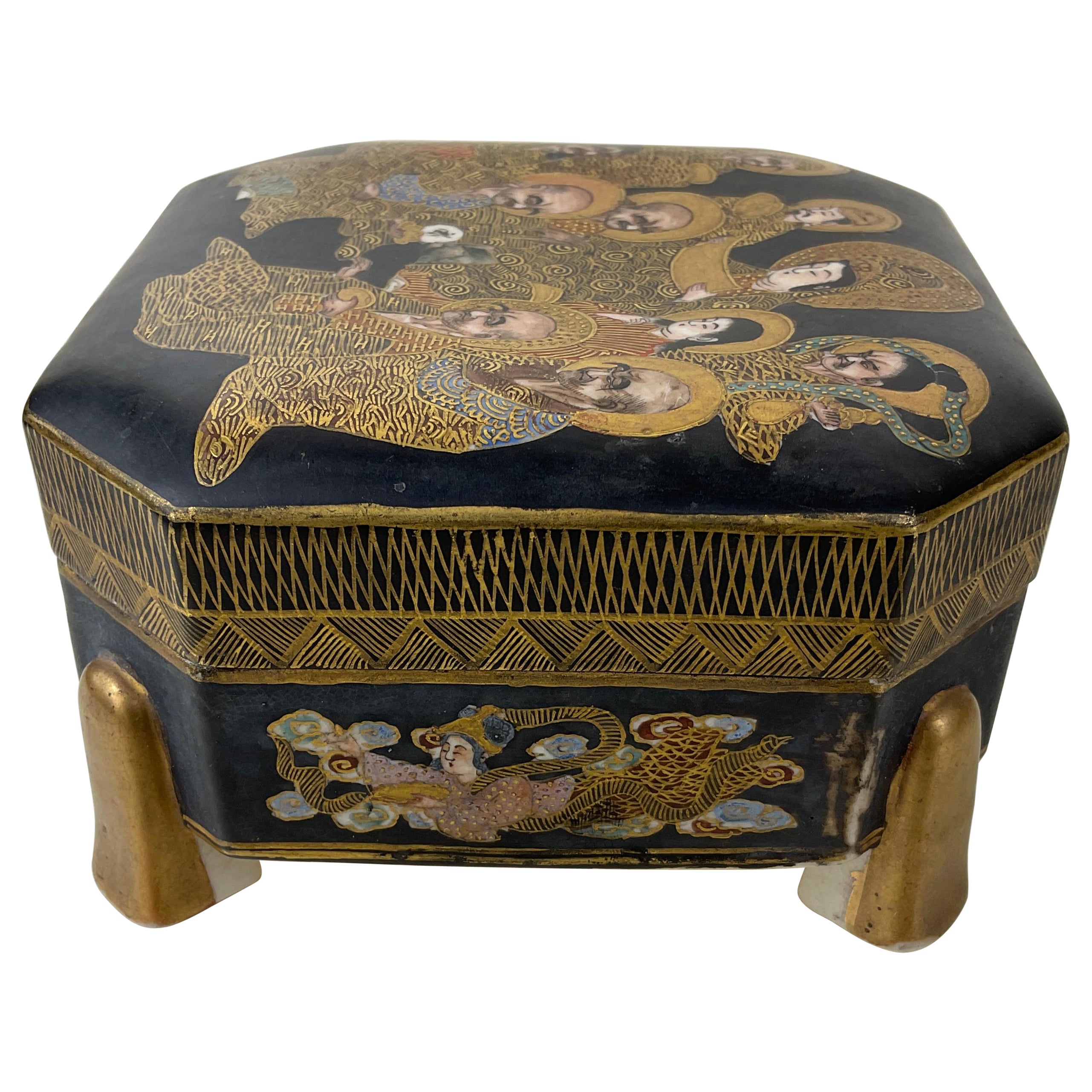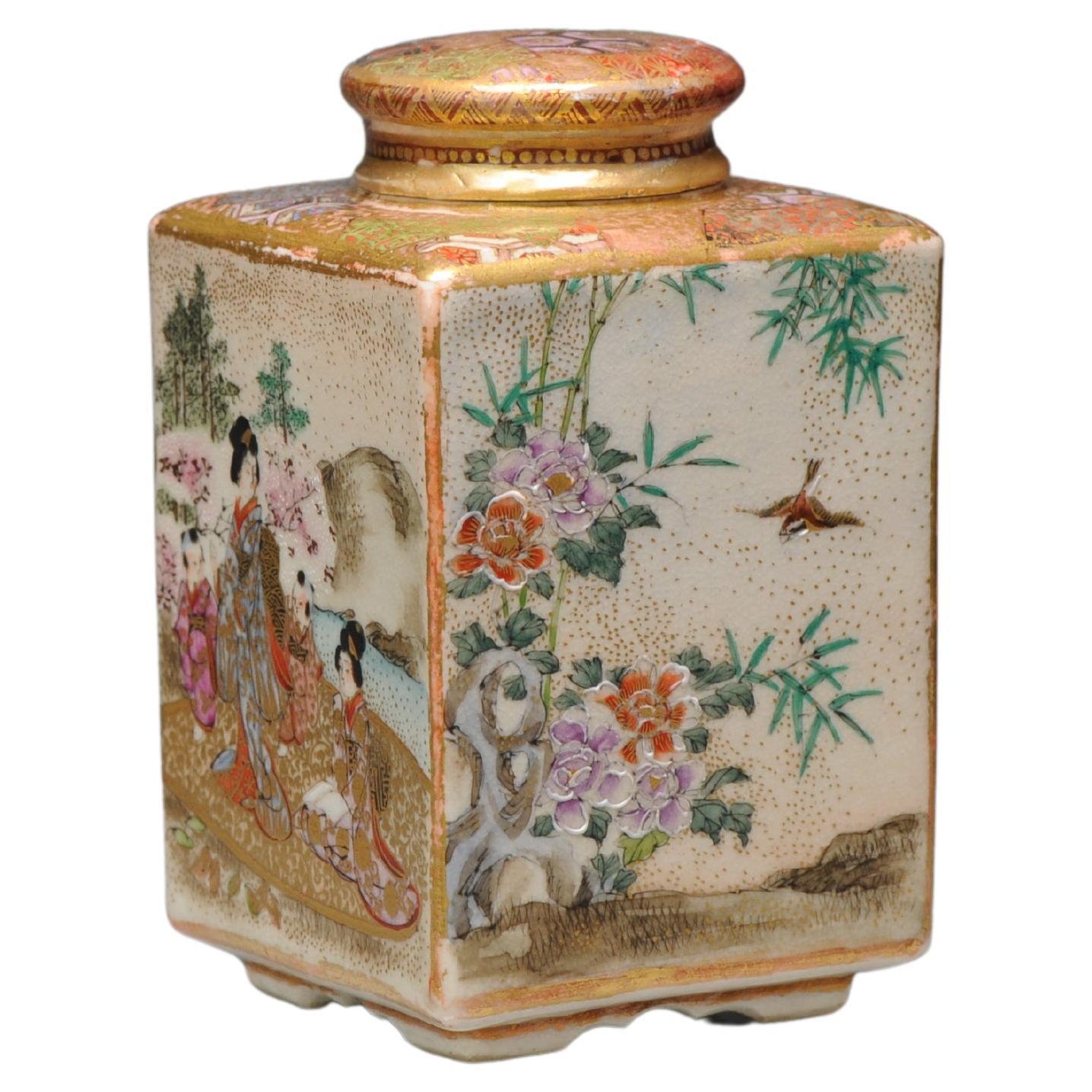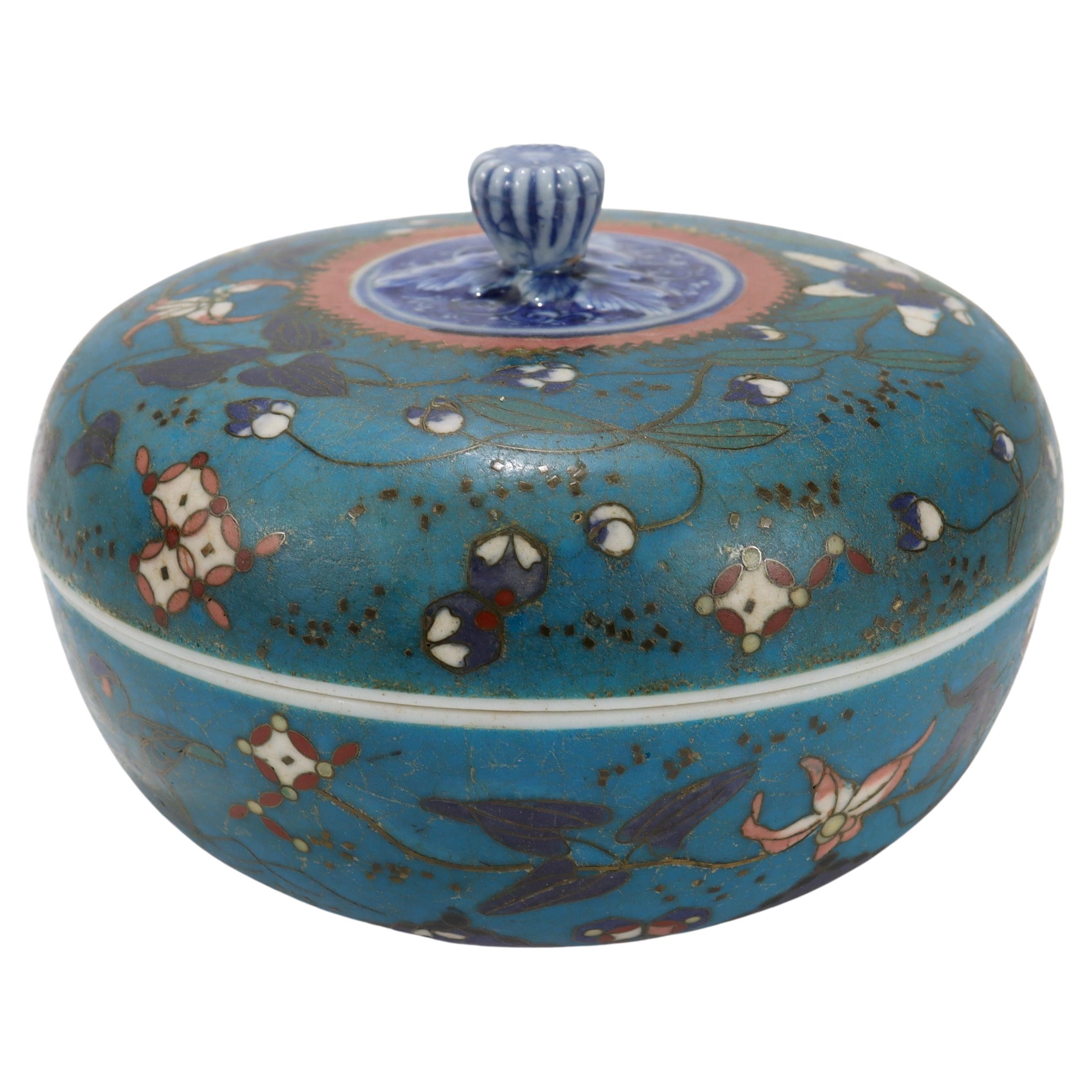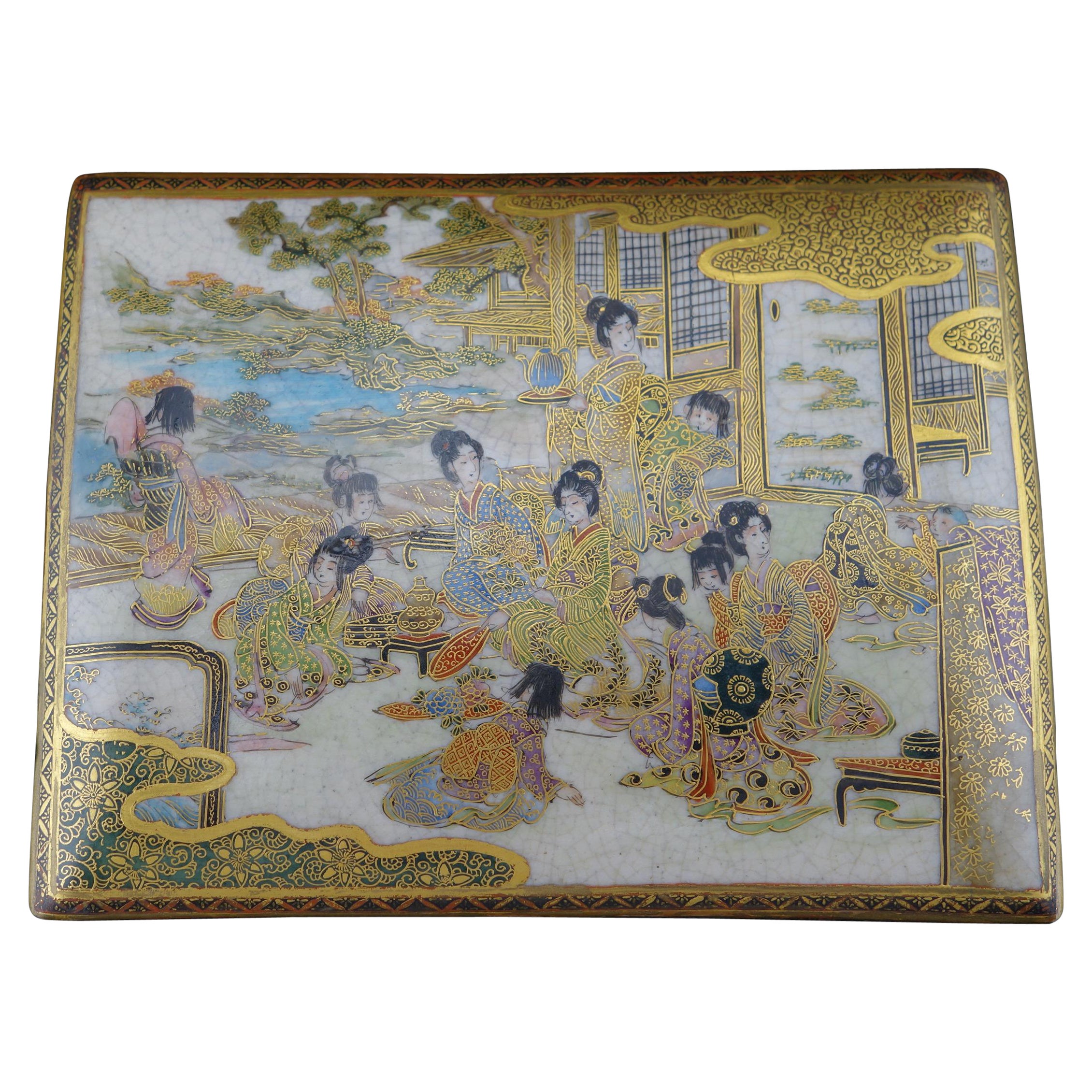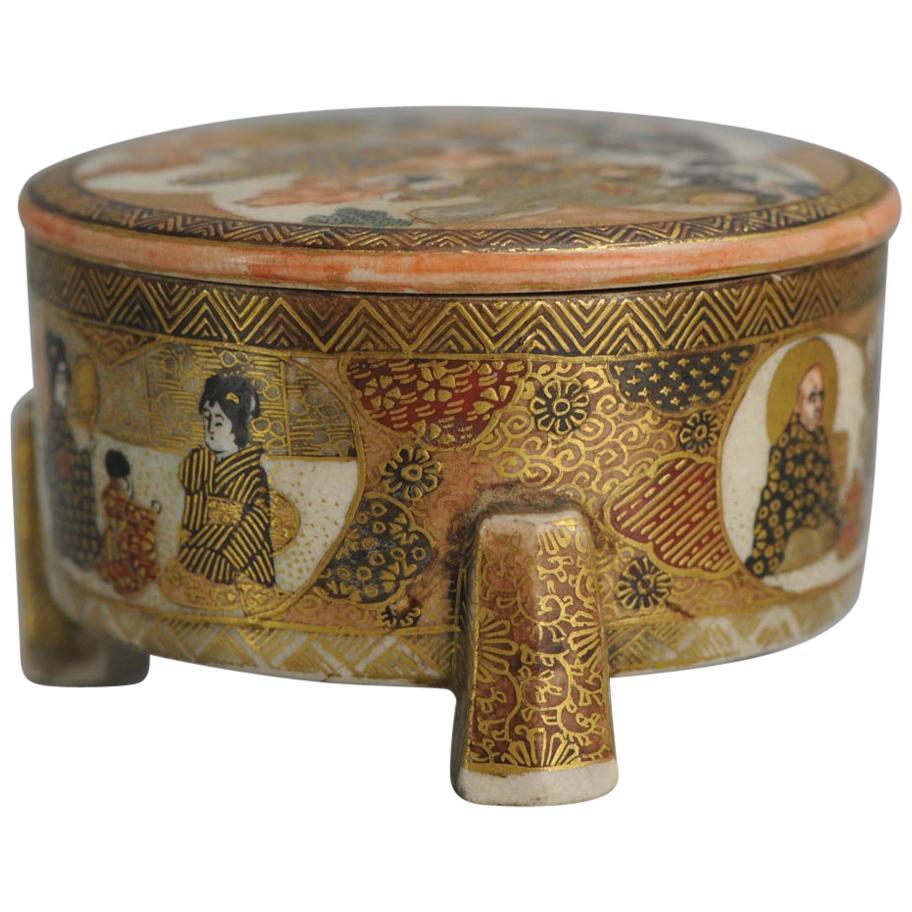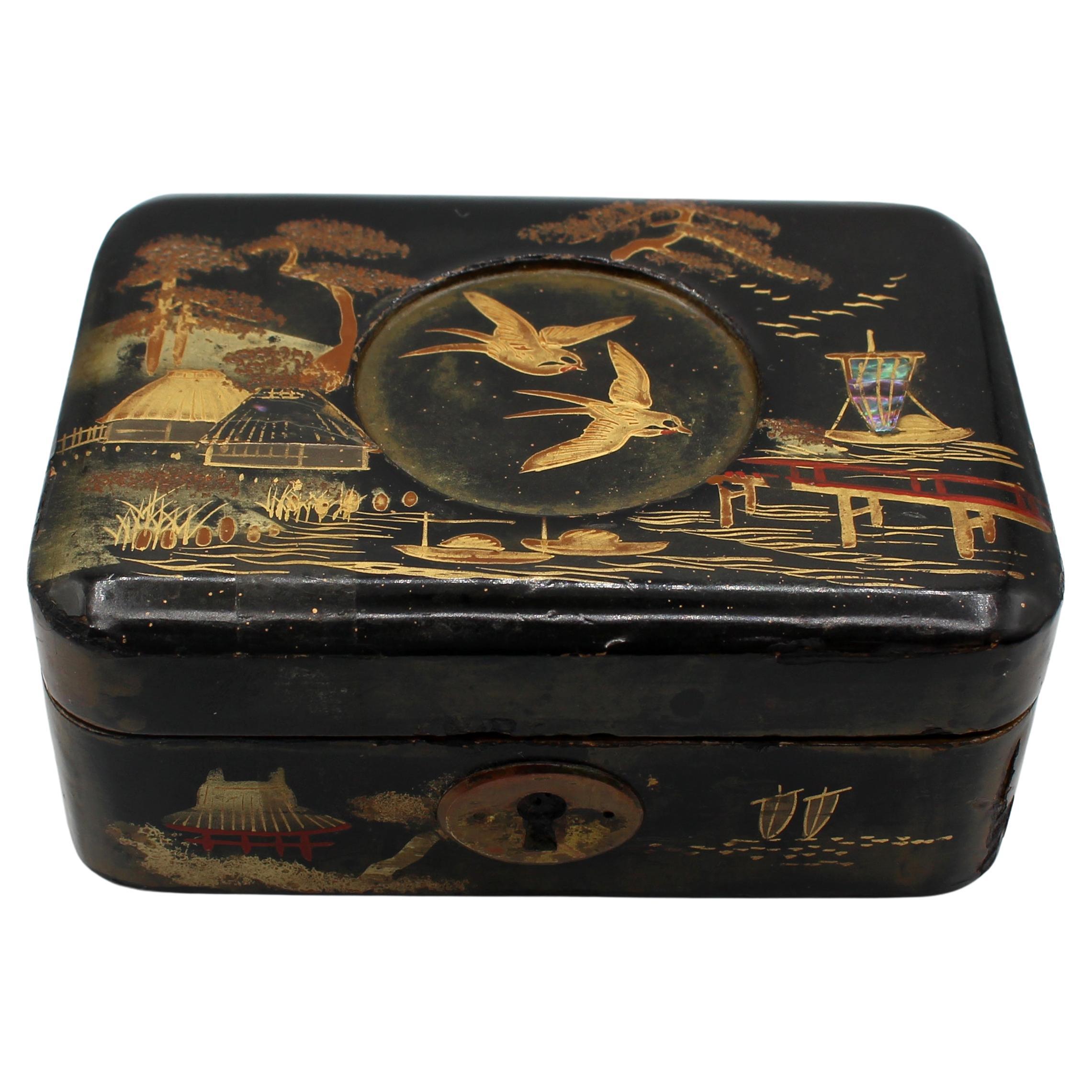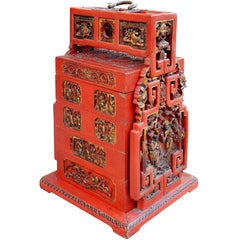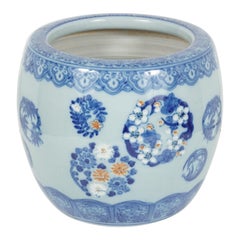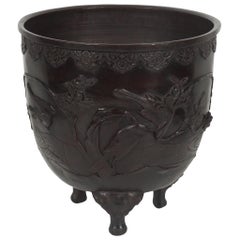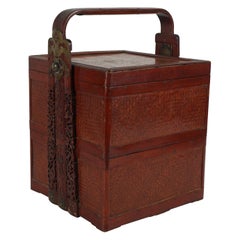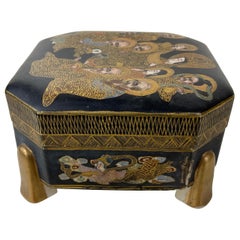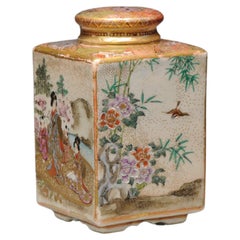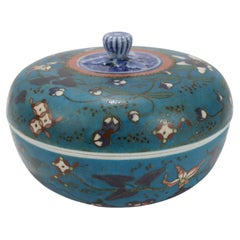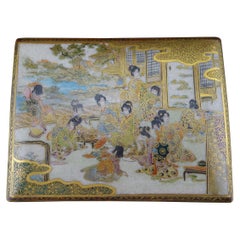Items Similar to Meiji Period Satsuma Patch Box
Want more images or videos?
Request additional images or videos from the seller
1 of 10
Meiji Period Satsuma Patch Box
$550
£417.33
€477.18
CA$768.20
A$854.13
CHF 445.98
MX$10,396.90
NOK 5,690.54
SEK 5,331.76
DKK 3,561.26
Shipping
Retrieving quote...The 1stDibs Promise:
Authenticity Guarantee,
Money-Back Guarantee,
24-Hour Cancellation
About the Item
This small detailed work made between 1890 and 1900 is skillfully painted representing a court lady in regal costumes being attended to by a small child carrying a bolt of silk cloth. This centered in a medallion where the raised decoration is heavily embellished with gold and patterned details. The round outer area is done in a cobalt blue with more goldwork designs and the interior of the box holds small painted objects as symbols of refinement and or beauty. The box is signed by the painter's hand but as yet we have not translated or matched it to a specific maker's work.
Wares of this type are most often produced in the city of Kagoshima in Kyushu province during the Meiji period and reflects the export industry designed to cater to western tastes but not particularly bought by Japanese citizens.
Patch boxes themselves became fashionable in the 17th and 18th centuries to store patches or beauty marks. These items made of gummed taffeta or some other fabric were used to conceal flaws such as pock marks or blemishes. They were also used to draw attention to specific details of one's face such as dimples. Patches came in a variety of sizes and specific shapes starting from a small dot and then moving on to stars, crescent moons, birds in flight, etc. They mostly could be found in black or brown but also came in brilliant colors. A further function was to make allusion to emotional states or conceived attributes a wearer wanted to express and a bewildering number of meanings could be associated with the location and specific shape a wearer choose that day. By 1796 the fashion for patches began to diminish with the introduction of the smallpox vaccination. In the later 19th century and into the early 20th century patches became a popular addition again to a woman's beauty products and so a resurgence of making boxes became popular.
Some slight wear to the gilding.
- Dimensions:Height: 1 in (2.54 cm)Diameter: 2.75 in (6.99 cm)
- Materials and Techniques:
- Place of Origin:
- Period:
- Date of Manufacture:1890
- Condition:Wear consistent with age and use.
- Seller Location:Hudson, NY
- Reference Number:1stDibs: LU811313033982
About the Seller
4.5
Vetted Professional Seller
Every seller passes strict standards for authenticity and reliability
Established in 1978
1stDibs seller since 2005
340 sales on 1stDibs
Typical response time: 19 hours
- ShippingRetrieving quote...Shipping from: Hudson, NY
- Return Policy
Authenticity Guarantee
In the unlikely event there’s an issue with an item’s authenticity, contact us within 1 year for a full refund. DetailsMoney-Back Guarantee
If your item is not as described, is damaged in transit, or does not arrive, contact us within 7 days for a full refund. Details24-Hour Cancellation
You have a 24-hour grace period in which to reconsider your purchase, with no questions asked.Vetted Professional Sellers
Our world-class sellers must adhere to strict standards for service and quality, maintaining the integrity of our listings.Price-Match Guarantee
If you find that a seller listed the same item for a lower price elsewhere, we’ll match it.Trusted Global Delivery
Our best-in-class carrier network provides specialized shipping options worldwide, including custom delivery.More From This Seller
View AllFine Chinese Lacquered Food Storage Box of Impressive Size
Located in Hudson, NY
This large and impressive Mandarin food storage box is very detailed and well-constructed. The case, made of finely carved wood, houses five different stackable storage boxes. Each b...
Category
Antique 19th Century Chinese Furniture
Materials
Bronze
Japanese Porcelain Hibachi of the Showa Period or Slightly Earlier.
Located in Hudson, NY
This porcelain Japanese hibachi or “Fire Bowl” was made in Japan circa 1900 to 1925. This is a traditional Japanese heating device and consists of a fireproof cylinder or box that ca...
Category
Early 20th Century Japanese Showa Ceramics
Materials
Porcelain
Large Japanese Meiji Period Open Bronze Censor
Located in Hudson, NY
This cast bronze censor is from Japan and was made circa 1880. Raised up on three legs which issue from demons mouths the container is cast with reliefs ...
Category
Antique Late 19th Century Japanese Meiji Metalwork
Materials
Bronze
Late Qing Dynasty Chinese Carved Bamboo and Woven Rush Lockable Wedding Basket.
Located in Hudson, NY
This Chinese stackable box made circa 1900-1915 was intended as a wedding basket and is a traditional object of importance within Chinese culture....
Category
Early 20th Century Chinese Qing More Asian Art, Objects and Furniture
Materials
Bamboo, Rush
Small Japanese Meiji Period Black and Gold Altar Stand
Located in Hudson, NY
This small late 19th-century Meiji period altar or stand with gilded & engraved brass mounts is a refined example of the art of lacquer in Japan. Crafted of deep black shiny lacquer ...
Category
Antique Late 19th Century Japanese Meiji More Asian Art, Objects and Fur...
Materials
Brass
19th Century Japanese Silver Inlayed Bronze Representing Daikoku
Located in Hudson, NY
From the Estate of Paul & Clara Kellner. This large bronze of Daikoku or the God of Prosperity closely associated with farmers, agriculture and rice staples of Japanese life and stability. His attributes are a co-mingling of Indian Buddhist forms of Shiva and the Shinto God...
Category
Antique Late 19th Century Japanese Sculptures and Carvings
Materials
Silver, Bronze
You May Also Like
19th Century Japanese Satsuma Lidded Box, Meiji
Located in Miami, FL
Meticulously enamelled and gilt satsuma box, Meiji Period (1867-1912).
Overall very good antique condition, base that the box sits on is a bit slanted.
L...
Category
Antique 19th Century Japanese Meiji Decorative Boxes
Materials
Porcelain
$2,900 Sale Price
21% Off
Antique 19th C Japanese Satsuma Box Matsumoto Hozan Marked Base Japan
Located in Amsterdam, Noord Holland
A small Satsuma vase, Yasuda, unidentified artist, of cuboid form with slightly domed cover, decorated with bijin alternating with landscape scenes,...
Category
Antique 19th Century Japanese Meiji Ceramics
Materials
Porcelain
$1,247 Sale Price
20% Off
Japanese Totai Shippo Porcelain Covered Box
Located in Philadelphia, PA
A fine Japanese porcelain box.
Decorated to the exterior with a dark turquoise enamel ground with floral decorations. The figural finial as wel...
Category
20th Century Japanese Meiji Ceramics
Materials
Enamel
Japanese Meiji Satsuma Finely Decorated and Gilded Scenic Box
By Satsuma
Located in Sarasota, FL
Japanese Meiji satsuma finely hand decorated and gilded box. The box depicts a different scene on each side. Marked with a maker's mark on the bottom.
Category
Antique Late 19th Century Japanese Meiji Ceramics
Materials
Pottery
Antique 19th Century Japanese Satsuma Covered Tripod Box Japan Yokohama Satsuma
Located in Amsterdam, Noord Holland
Fabulous Japanese Satsuma ware tripod lidded box.
Marked ??Nippon ??Yokohama ???Yasui-zo(made) which means that it is so called Yokohama-Satsuma
Condition:
Overall condition 1...
Category
Antique 19th Century Japanese Meiji Ceramics
Materials
Earthenware
$575 Sale Price
20% Off
Meiji Period Lacquer Box
Located in Chapel Hill, NC
Meiji period small lacquer box with hinged lid, Japanese. Finely decorated - bits of abalone inlay add sparks in several areas. The recessed circle...
Category
Antique Late 19th Century Japanese Meiji Decorative Boxes
Materials
Lacquer
$236 Sale Price
20% Off
More Ways To Browse
Gold Match Box
Small Asian Box
Antique Satsuma
Patch Box
Satsuma Meiji
Meiji Silk
Satsuma Meiji Period
Japanese Meiji Period Box
Cobalt Box
Satsuma Hand Painted
Japanese Cobalt Blue Ceramics
Japanese Ceramic Birds
Japanese Patches
Cobalt Blue Box
18th Century Japanned Box
Asian Black And Gold Decoration
Early Satsuma
Asian Bird Box
